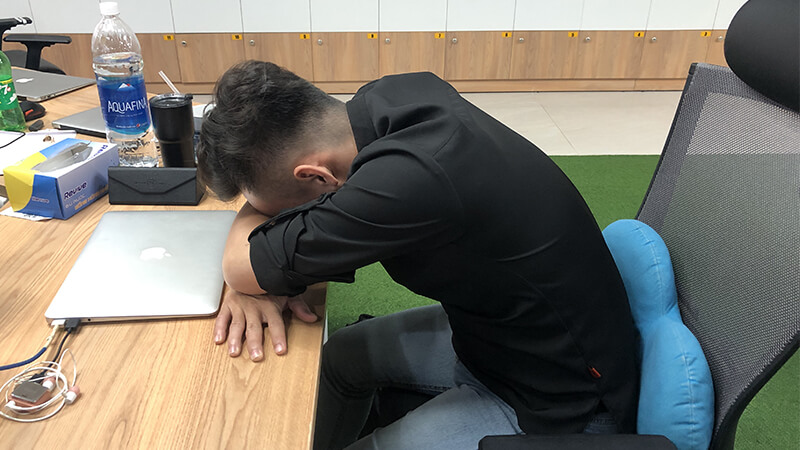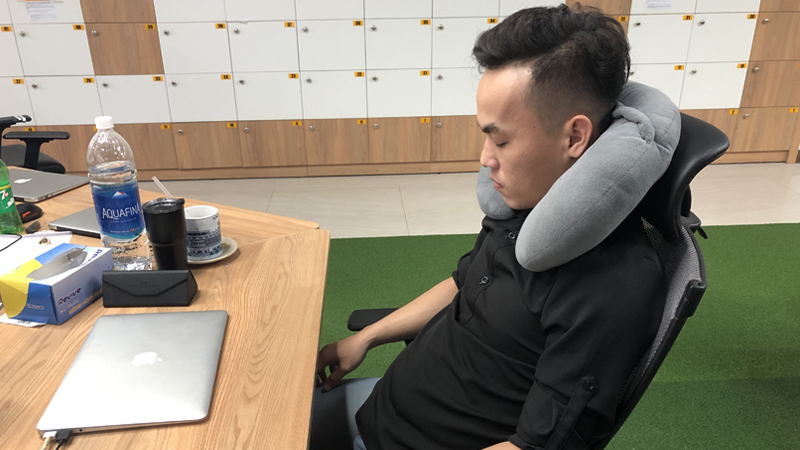A short afternoon nap has the power to enhance cognitive function and memory, making your brain feel five years younger. However, napping the wrong way can have negative effects on the skin and body shape of office workers, leading to fatigue and a lack of focus at work.
Reference:
1. The Dangers of Napping Incorrectly
Many office workers experience fatigue after waking up from a nap instead of feeling refreshed. This is often due to incorrect sleeping postures.
A common sleeping posture among office workers is napping on their office chair with their head tilted to one side or resting on their desk. This seemingly harmless posture can pose potential health risks.
Resting your head on the desk can constrict your chest, affecting your breathing and increasing pressure on your heart and lungs. When your head presses on your hands, it can impact blood circulation and nerve conduction, resulting in numbness and pain in your hands and arms. Eye pressure can also occur when your eyes are pressed against your hands, causing eye strain and discomfort upon waking.

Leaning against a chair and tilting your head to one side can lead to a misaligned neck, causing tension in the neck muscles, such as the scalene and sternocleidomastoid muscles. This can result in long-lasting neck pain and, over time, increase the risk of cervical spondylosis and other bone and joint problems in the neck, shoulder, and back.

2. The Correct Napping Posture
The best sleeping posture is lying straight on a flat surface. Additionally, sleeping on your back with a straight spine and relaxed limbs can promote deeper relaxation and better sleep.
Use a camping sleeping bag
Utilize the office floor space by laying out a sleeping bag and imagining you’re on a camping or outdoor adventure. For those who enjoy camping, this will be a familiar and comfortable setup.
Sleeping mat
Consider investing in a sleeping mat, which is compact, convenient, and easy to clean. These mats are affordable and readily available online.
Combine a U-shaped pillow with your office chair
If your office space doesn’t allow for a sleeping bag or mat, don’t worry. All you need is a U-shaped pillow, a lumbar support pillow, and an additional chair for your feet. Adjust your office chair to form a straight line, and you’re all set for a comfortable afternoon nap.

Some tips for napping
An ideal afternoon nap should last between 15 and 20 minutes. This short duration will leave you feeling refreshed and energized.
Find a quiet and dimly lit space to help you fall asleep more easily.
After lunch, wait for 10 to 20 minutes before taking a nap to prevent stomach discomfort.
Upon waking, sit for one to three minutes to allow your body to adjust before resuming work.
A good afternoon nap can relieve stress and improve your work performance. Therefore, finding the right sleeping posture is crucial for your overall well-being.






























